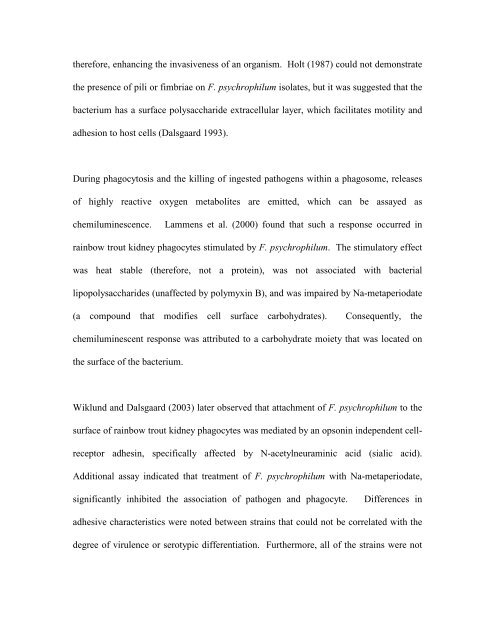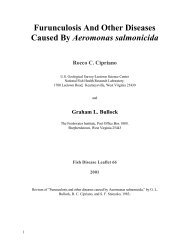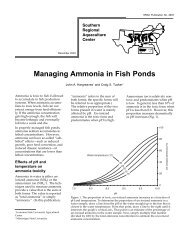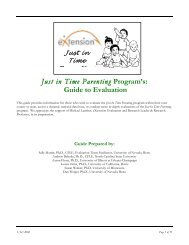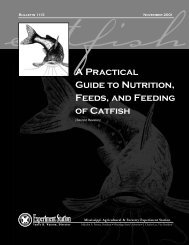Flavobacterium psychrophilum, cause of ... - cop.eXtension.org
Flavobacterium psychrophilum, cause of ... - cop.eXtension.org
Flavobacterium psychrophilum, cause of ... - cop.eXtension.org
You also want an ePaper? Increase the reach of your titles
YUMPU automatically turns print PDFs into web optimized ePapers that Google loves.
therefore, enhancing the invasiveness <strong>of</strong> an <strong>org</strong>anism. Holt (1987) could not demonstrate<br />
the presence <strong>of</strong> pili or fimbriae on F. <strong>psychrophilum</strong> isolates, but it was suggested that the<br />
bacterium has a surface polysaccharide extracellular layer, which facilitates motility and<br />
adhesion to host cells (Dalsgaard 1993).<br />
During phagocytosis and the killing <strong>of</strong> ingested pathogens within a phagosome, releases<br />
<strong>of</strong> highly reactive oxygen metabolites are emitted, which can be assayed as<br />
chemiluminescence. Lammens et al. (2000) found that such a response occurred in<br />
rainbow trout kidney phagocytes stimulated by F. <strong>psychrophilum</strong>. The stimulatory effect<br />
was heat stable (therefore, not a protein), was not associated with bacterial<br />
lipopolysaccharides (unaffected by polymyxin B), and was impaired by Na-metaperiodate<br />
(a compound that modifies cell surface carbohydrates). Consequently, the<br />
chemiluminescent response was attributed to a carbohydrate moiety that was located on<br />
the surface <strong>of</strong> the bacterium.<br />
Wiklund and Dalsgaard (2003) later observed that attachment <strong>of</strong> F. <strong>psychrophilum</strong> to the<br />
surface <strong>of</strong> rainbow trout kidney phagocytes was mediated by an opsonin independent cell-<br />
receptor adhesin, specifically affected by N-acetylneuraminic acid (sialic acid).<br />
Additional assay indicated that treatment <strong>of</strong> F. <strong>psychrophilum</strong> with Na-metaperiodate,<br />
significantly inhibited the association <strong>of</strong> pathogen and phagocyte. Differences in<br />
adhesive characteristics were noted between strains that could not be correlated with the<br />
degree <strong>of</strong> virulence or serotypic differentiation. Furthermore, all <strong>of</strong> the strains were not


